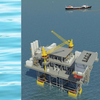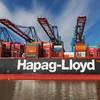Oakland Port Aims for Zero Emissions
The Port of Oakland, a major container ship facility located in Oakland, California, in the San Francisco Bay, said that its Commissioners have approved an air quality plan intended to drastically cut diesel and greenhouse gas emissions resulting from the Port’s maritime operations.
Christened as "Seaport Air Quality 2020 and Beyond Plan", it envisions a zero-emissions operation in the future. The Oakland Board of Port Commissioners voted last week to approve the 259-page plan.
The Port said that the plan would provide a framework for maritime development for the next 30 years. The plan calls for changes in equipment, operations, fuels and infrastructure at the seaport.
“The Port’s Seaport Air Quality 2020 and Beyond Plan sends a powerful message that the Port will lead the way towards a post-carbon future,” said Port of Oakland Executive Director Chris Lytle. “We’re always looking at pollution reduction measures that reflect new technologies, financial resources and stakeholder input.”
The projects outlined in the plan include: Converting Port fleet vehicles and equipment to zero-emission; Installing electric infrastructure at container terminals; Tracking yard equipment for fuel consumption, operability and performance; and identifying cleaner fuels and alternative, renewable power sources
As a corollary to the plan, Commissioners asked for a report in six months on the feasibility of converting trucks and cargo-handling equipment to battery power. They also requested an update on the infrastructure needed to charge electric vehicles.
The Seaport Air Quality 2020 and Beyond plan is the successor to Oakland’s Maritime Air Quality Plan adopted a decade ago. That plan helped the Port reduce diesel particulate matter by 81 percent. Truck diesel emissions were down 98 percent and ship emissions dropped 78 percent.
The Port said it collaborated with community leaders, business representatives and academics over the last 18 months to create its new plan. The plan provides for community outreach enabling neighbors to have a say in how the Port’s growth would affect air quality. It added that the plan calls for ongoing stakeholder meetings, work sessions and Town Hall updates.











